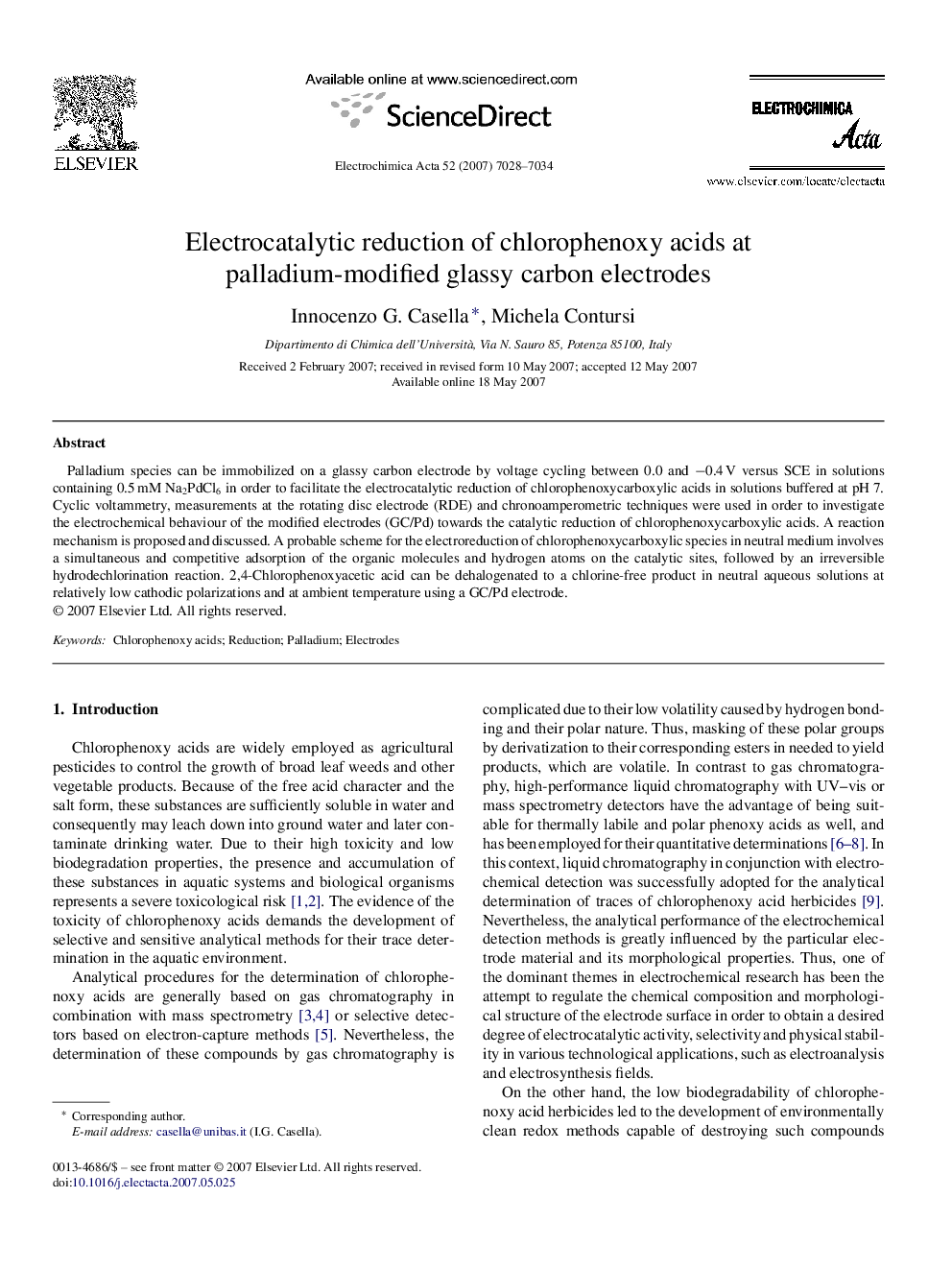| Article ID | Journal | Published Year | Pages | File Type |
|---|---|---|---|---|
| 195798 | Electrochimica Acta | 2007 | 7 Pages |
Palladium species can be immobilized on a glassy carbon electrode by voltage cycling between 0.0 and −0.4 V versus SCE in solutions containing 0.5 mM Na2PdCl6 in order to facilitate the electrocatalytic reduction of chlorophenoxycarboxylic acids in solutions buffered at pH 7. Cyclic voltammetry, measurements at the rotating disc electrode (RDE) and chronoamperometric techniques were used in order to investigate the electrochemical behaviour of the modified electrodes (GC/Pd) towards the catalytic reduction of chlorophenoxycarboxylic acids. A reaction mechanism is proposed and discussed. A probable scheme for the electroreduction of chlorophenoxycarboxylic species in neutral medium involves a simultaneous and competitive adsorption of the organic molecules and hydrogen atoms on the catalytic sites, followed by an irreversible hydrodechlorination reaction. 2,4-Chlorophenoxyacetic acid can be dehalogenated to a chlorine-free product in neutral aqueous solutions at relatively low cathodic polarizations and at ambient temperature using a GC/Pd electrode.
